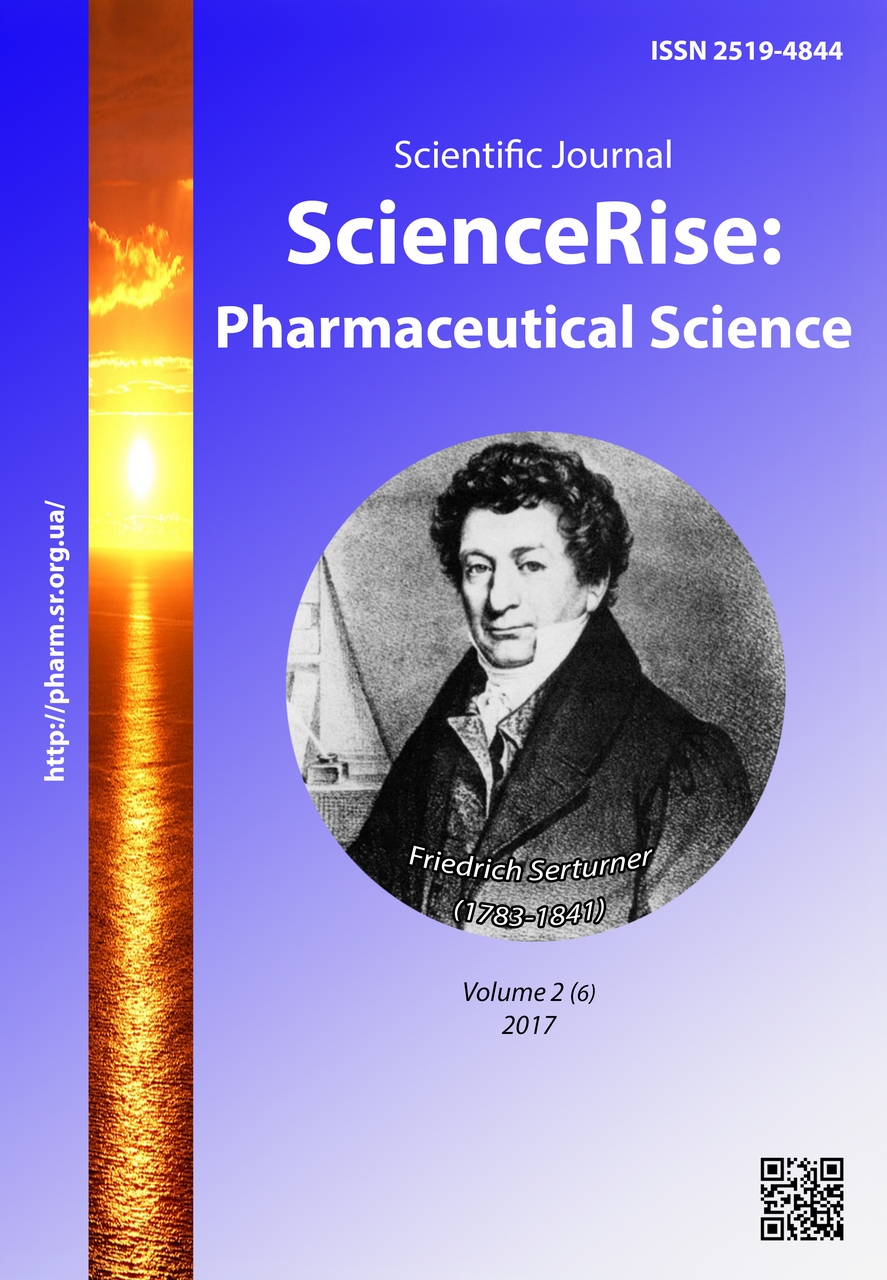The study of steroidal compounds in canna plant material
DOI:
https://doi.org/10.15587/2519-4852.2017.99951Keywords:
Canna lily, roots, rhizomes, leaves, flowers, steroidal compounds, Gas chromatography – Mass spectrometryAbstract
Aim. Identification and quantitative determination of steroidal compounds in Canna roots, rhizomes, leaves and flowers.
Methods. Identification and quantitative determination of steroidal compounds in Canna herbal material was carried out by Gas chromatography – Mass spectrometry method (GC/MS).
Results. In result of the study, 15 steroidal compounds were identified in Canna roots, 11 compounds – in rhizomes, 12 – in leaves, and 3 – in flowers. β-sitosterol, campesterol, and stigmasterol dominated quantitavely in all studied samples.
The content of steroidal compounds in Canna was: 138.6 mg/kg in leaves, 130.5 mg/kg in roots, 126.7 mg/kg in rhizomes, and 37.01 mg/kg in flowers.
During the research work it was found that β-sitosterol was dominating compound by its quantitative content in all types of Canna plant material. Its content was 60.2 mg/kg in rhizomes, 57.0 mg/kg in roots, 47.0 mg/kg in leaves, and 31.52 mg/kg in flowers.
Conclusion. The obtained results can be used for development of the methods for Canna quality control, as well as for obtaining biologically active substances from the herbal material
References
- Al-Snafi, A. E. (2015). Bioactive components and pharmacological effects of Canna indica – an overview. International Journal of Pharmacology & Toxicology, 5 (2), 71–75.
- Mishra, T., Goyal, A. K., Middha, S. K., Sen, A. (2011). Antioxidative properties of Canna edulis Ker-Gawl. Indian Journal of Natural Products and Resources, 2 (3), 315–321.
- Niraimathi, V., Sundaraganapathy, R. (2014). Comparative study of phytochemical and in vitro anticancer activity of hydro ethanolic extract of dalbergia latifolia roxb. And canna indica linn. International Journal of Biological & Pharmaceutical Research, 3 (5), 261–265.
- Zhang, J., Wang, Z.-W., Mi, Q. (2011). Phenolic compounds from Canna edulis Ker residue and their antioxidant activity. Food Science and Technology, 44 (10), 2091–2096. doi: 10.1016/j.lwt.2011.05.021
- Woyengo, T. A., Ramprasath, V. R., Jones, P. J. H. (2009). Anticancer effects of phytosterols. European Journal of Clinical Nutrition, 63 (7), 813–820. doi: 10.1038/ejcn.2009.29
- Tsurufuji, S., Sugio, K., Sato, H., Ohuchi, K. (1980). A review of mechanism of action of steroid and non-steroid antiinflammatory drugs. Inflammation: Mechanisms and Treatment, 4, 63–78. doi: 10.1007/978-94-010-9423-8_7
- Kaur, N., Chaudhary, J., Jain, A., Kishore, L. (2011). Stigmasterol: a comprehensive review. International Journal of Pharmaceutical Sciences and Research, 2 (9), 2259–2265.
- Barnes, P. J., Adcock, I., Spedding, M., Vanhoutte, P. M. (1993). Anti-inflammatory actions of steroids: molecular mechanisms. Trends in Pharmacological Sciences, 14 (12), 436–441. doi: 10.1016/0165-6147(93)90184-l
- Darsini А., І. P., Shamshad, S., Haul, M. J. (2015). Canna indica (l.): a plant with potential healing Powers: a review. International Journal of Pharma and Bio Sciences, 6 (2), B1–B8.
- Gur'yeva, I. G. (2014). Vy`vchennya steroyidny`x spoluk ta koreniv ty`fonu. Fitoterapiya, 1, 71–73.
Downloads
Published
How to Cite
Issue
Section
License
Copyright (c) 2017 Svitlana Tymofieieva, Oleksandra Kyslychenko, Iryna Zhuravel

This work is licensed under a Creative Commons Attribution 4.0 International License.
Our journal abides by the Creative Commons CC BY copyright rights and permissions for open access journals.








